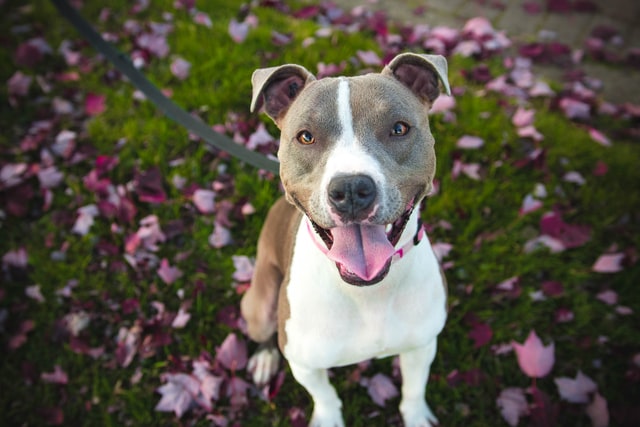Common Cancers in Dogs
Posted: 11/08/2022 | BY: Erin Cain | Categories: Dog , Health problems , Pet care
While no pup parent wants to hear that their dog has cancer, it is sadly an all too common situation that some dog owners face daily. Approximately fifty percent of dogs older than ten will develop cancer; this disease strikes younger dogs, too. You can prepare to face your dog’s possible cancer knowing that advancements in canine cancer treatments mean that many dogs can live long, happy lives after a diagnosis. Here are the most common cancers in dogs so you can know what you and your pup might face in the future.

Lymphoma
Canine lymphoma accounts for up to 24% of all new canine cancer diagnoses. Lymphoma involves the cancer of the blood cells (lymphocytes) and lymphoid tissues. Most canine lymphoma diagnoses fall into one of the following categories:
- Leukemia, which affects blood cells and bone marrow;
- Gastrointestinal, which affects the lymphatic lining of the stomach;
- Multicentric, which causes the generalized and painless enlargement of the lymph nodes; this type of lymphoma is responsible for 84% of all canine lymphomas;
- Cutaneous, which affects the skin, usually beginning as a rash and progressing to large skin lesions.
While there is no cure for canine lymphoma, your dog can still live months to years in remission with the proper care and treatment. There are various treatments for canine lymphoma, including chemotherapy, radiation treatment, and immunotherapy treatment.
Melanoma
Melanoma cancer can appear in benign and malignant forms. Benign melanoma often manifests as round raised masses on a dog’s back, head, or toes. Malignant melanoma causes the lymph nodes to swell, and tumors develop on a dog’s face, mouth, or eye; generally, 80% of dogs with melanoma develop tumors in their oral cavity. A veterinarian will take a biopsy of the mass to determine if it is malignant and spreading.
The best outcome for melanoma patients occurs if the cancer is caught fast enough. Veterinarians will surgically remove tumors; however, chemotherapy or melanoma vaccines are the likely treatment options if the cancer has spread.
Mast Cell Tumors
As the most common skin cancer in dogs, mast cell tumors make up roughly 20% of all canine skin tumors. Because mast cell tumors do not have one set shape or feel, a cancer diagnosis rests on assessing the tumor’s cells under a microscope. Once the veterinarian determines the tumor’s level of malignancy, they will design a treatment plan appropriate for the cancer. Low-grade tumors typically don’t spread; thus, surgery is the best medical option. For high-grade malignant mast cell tumors, veterinarians will use chemotherapy, surgery, and radiation therapy treatments. Low-grade tumors have a higher chance of remission, while malignant tumors can extend a dog’s life months to possibly years if treated early.
Mast cell tumors may occur in any dog; however, certain breeds are more prone to developing them, including Pugs, Boxers, Boston Terriers, Bull Terriers, Shar-Peis, Labrador and Golden Retrievers, French Bulldogs, and Weimaraners.

Osteosarcoma
Osteosarcoma is the most common type of bone cancer in dogs. While any dog can develop this cancer, osteosarcoma is most often found in large and giant dog breeds, such as the Great Dane, the Bernese Mountain Dog, the Golden Retriever, and the Rottweiler. This bone cancer is highly aggressive and usually begins in the dog’s limbs; however, the tumor may also be found in the jaw, head, spine, pelvis, and ribs. The condition becomes painful for dogs as the tumor grows larger, destroying the bone it’s attached to.
Osteosarcoma spread quickly through a dog’s body and is one of the more difficult canine cancers to treat. Often, dogs have the cancerous limb amputated and then treated with chemotherapy.
Hemangiosarcoma
As a blood vessel cancer, canine hemangiosarcoma can occur anywhere within the body, although it most often affects the skin, heart, or spleen. This cancer is exclusive to dogs, always malignant, and spreads swiftly throughout the body; thus, it is fatal without immediate emergency treatment. Hemangiosarcoma has a high mortality rate with an average median survival at 3 to 6 months and a one-year survival rate of 10%. Hemangiosarcoma primarily develops in large breed dogs, with nearly 1 in 5 of all Golden Retrievers having this cancer.
Unfortunately, there is no effective test for early diagnosis of this blood vessel cancer, so most diagnoses are found at too late a stage. Once the cancer diagnosis is confirmed, Treatment options range from surgery to removal of the primary tumor or intensive chemotherapy.

Fibrosarcoma
Fibrosarcoma, or canine soft tissue cancer, is a tumor of the connective tissues which grow under the skin. These tumors are typically attached to the bone and may feel firm or soft. Fibrosarcoma is slow-moving cancer that grows and spreads over months or years. When this cancer spreads, it invades other organs or the lymph nodes. Most often, fibrosarcoma works its way to the lungs or originates in the oral cavity.
Treatment for fibrosarcoma is varied, with chemotherapy and radiation at the top of the list of options. Surgery and electrochemotherapy, where the chemo is injected into the tumor, are other aggressive ways of tackling this cancer. With immediate treatment, dogs with fibrosarcoma have a survival rate of 6 to 12 months.
Pet insurance helps cover the cost of cancer treatment.
Sadly, cancer is a common disease in canines, and cancer treatment can become expensive fast. The surgical removal of tumors costs $3000 – $5000 — more if the cancer has grown in a difficult spot — and daily radiation therapy four times a week is $4500 – $6000. That doesn’t even cover medications ($300 – $400 a month) or additional treatments. Most pup parents don’t have those funds, but a pet insurance plan can help offset the costs of canine cancer treatments, making the most effective therapies accessible for you and your dog. So consider your pup’s future and get a free pet insurance quote today. You and your dog will be thankful for it tomorrow.
References:
- Eckstein, S. (2021). Dogs and Cancer: Get the Facts. Retrieved from https://pets.webmd.com/dogs/guide/dogs-and-cancer-get-the-facts#1
- Austin Veterinary Emergency & Specialty. (2019). Oncology Highlight: Canine Lymphoma. Retrieved from https://austinvets.com/oncology-highlight-canine-lymphoma/
- Mar Vista Animal Medical Center. (n.d.). Lymphoma in Dogs. Retrieved from https://www.marvistavet.com/lymphoma-in-dogs.pml
- Upstate Vet Emergency + Special Care. (2018). Melanoma — Location, Location, Location. Retrieved from https://upstatevet.com/2018/11/melanoma-location-location-location/
- Animal Medical Center of Southern California. (2021). Canine Mast Cell Tumors. Retrieved from https://animalmedcenter.com/canine-mast-cell-tumors/
- Morris Animal Foundation. (2021). Red Lumps or Bumps on Our Dogs — Normal or Worrisome? Retrieved from https://www.morrisanimalfoundation.org/article/skin-cancer-in-dogs-mast-cell-tumors
- Hardy, C. (2020). BONE CANCER IN DOGS. Retrieved from https://www.csuanimalcancercenter.org/2020/07/09/bone-cancer-in-dogs/
- Chaikin, P., Welihozkiy, A. (2018). Hemangiosarcoma in a Dog. Retrieved from https://www.hindawi.com/journals/crivem/2018/6160980/
- Ritt, M., Breen, T. (2007). Canine Hemangiosarcoma — The Road from Despair to Hope. Retrieved from https://www.akcchf.org/canine-health/your-dogs-health/canine-hemangiosarcoma.html
- Long Island Veterinary Specialists. (2021). Soft Tissue Sarcoma in Dogs and Cats. Retrieved from https://www.livs.org/soft-tissue-sarcoma-in-dogs-and-cats/
- NC State Veterinary Hospital. (2021). Canine Soft Tissue Sarcoma. Retrieved from https://cvm.ncsu.edu/nc-state-vet-hospital/small-animal/oncology/canine-soft-tissue-sarcoma/
Disclaimer
The information contained on this blog is intended for informational and educational purposes only and should not be construed as medical advice. It is not a substitute for professional veterinary care. Always consult with your veterinarian before making any changes to your pet's health care or treatment plan.
The authors of this blog are not veterinarians and do not claim to be experts in pet health. The information provided here is based on our own experiences and research, as well as information from reputable sources. However, we cannot guarantee the accuracy or completeness of this information.
We encourage you to do your own research and consult with your veterinarian before making any decisions about your pet's health.
Previous post
5 Things To Know About Hiking With DogsNext post
CBD Oil for Pets: Hype or Helpful?Compare top pet insurance providers plans.
Enter your dog’s age in years and months to calculate their age equivalent to human years.
Calculate your dog’s ageEnter your cat’s age in years and months to calculate their age equivalent to human years.
Calculate your cat’s age